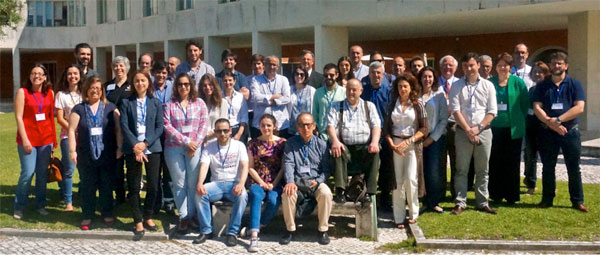Additive Manufacturing Summer School offered by CoLab Emerging Technologies
Interdisciplinary research,
education and capacity building
14 Jun 2016
The Additive Manufacturing Summer School was organized by Paula M. Vilarinho and Brian Korgel and took place at the Department of Materials and Ceramics Engineering of the University of Aveiro, from 6 to 7 June 2016.
Additive Manufacturing (AM), also known as 3D printing, is a technology that has grown by double digits for the last 20 years.
During two days approximately 40 participants coming from industry, technological centers and academia were exposed to the basic principles of AM, the current state of AM as a processing technology and how it is expected to shape the next 25 years of production.
The primary goal of the course was to provide sufficient information about AM for participants to evaluate where in their working activities the technology might make sense to employ. Upon completion of this course, the participants had a basic knowledge of all seven types of AM processes, the types of materials that are used for each, how to design for AM applications, how to evaluate the economic value of using AM in a manufacturing application, and how the technology arose.
The lecturers were international recognised experts in the field. Carolyn Seepersad is an Associate Professor of Mechanical Engineering and General Dynamics Faculty Fellow at The University of Texas at Austin. Dr. Seepersad’s research involves the development of methods and computational tools for engineering design and additive manufacturing. Her research interests include simulation-based design of complex systems and materials, design for additive manufacturing, innovation, and environmentally conscious design of products and energy systems. David Bourell is the Temple Foundation Professor of Mechanical Engineering at The University of Texas at Austin. He is currently director of the Laboratory for Freeform Fabrication. Bourell’s areas of research include particulate processing with emphasis on sintering kinetics and densification, and materials issues associated with laser sintering (LS).
The course started with an overview of Additive Manufacturing, exploring topics including the economic rationale for using AM instead of a conventional manufacturing process for a given manufacturing run; the seven ASTM categories of AM processes; the history of AM from the viewpoint of the patent literature; the characteristics of AM materials which make them suitable for an AM process, and the commercial materials available for AM (polymers, metals, ceramics, composites) for each of the major AM technologies; and design for AM, which introduces new design constraints even as it removes those associated with conventional manufacturing processes. The program was rounded out with presentations on current ASTM/ISO standards related to AM and new standards under development; the repeatability and reliability of AM using as a specific case the mechanical properties of laser sintered polyamide; and a novel application of AM to convert of digital photographs into 3D back-lit images (lithophanes). Finally, the program explored mid- and long-term perspectives on the future of Additive Manufacturing, potentially including organ printing and volume-based AM/3DP.


 News
News
